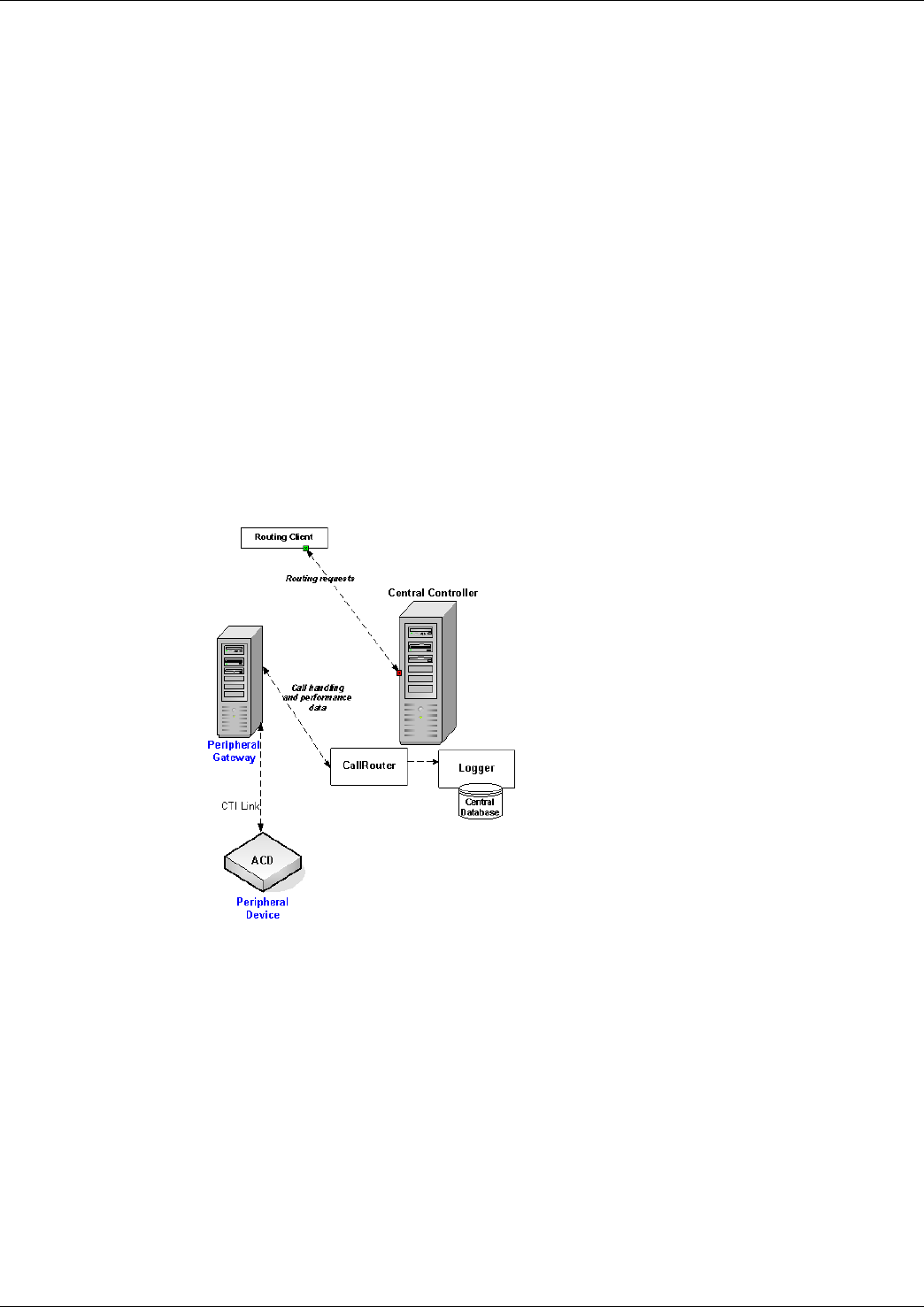User Guide
Table Of Contents
- Cover Page
- Table of Contents
- List of Figures
- Figure 1 : Central Controller
- Figure 2 : Peripheral and Peripheral Gateway
- Figure 3 : Administrative Workstation
- Figure 4 : WebView Server
- Figure 5 : Diagram of System Components
- Figure 6 : ICM Data Environment
- Figure 7 : Real-Time Data Moves to AW Local Database
- Figure 8 : Icons for Graphs and Tables
- Figure 9 : Deployment with Enterprise Routing
- Figure 10 : Sample Script for Enterprise Routing
- Figure 11 : Script Example for Agent Level Routing
- Figure 12 : Sample Script for Hybrid Routing
- Figure 13 : Agent State and Task State Relationship
- Figure 14 : Sample Routing Script for Information Gathering and Queuing
- Figure 15 : Call Type Data for Calls that Abandon after Call Type is Changed
- Figure 16 : Call Type Data for Calls that Abandon before Call Type is Changed
- Figure 17 : MultiChannel Options
- Figure 18 : Agent State Hierarchy
- Figure 19 : Call Abandoned While On Hold Scenario
- Preface
- Chapter 1: System Architecture and Reporting
- Chapter 2: Understanding Reporting
- Chapter 3: Understanding Routing and Queuing
- Chapter 4: Planning for Reporting
- Planning for Reporting at Unified ICM Setup
- Planning for Your Deployment
- Planning for Configuration and Scripting
- Planning for Agent Reporting
- Planning for Call Types
- Planning for Custom Reporting
- Planning for the HDS
- Planning for Enterprise Routing and Enterprise Reporting
- Planning for Service and Enterprise Service Reporting
- Planning for Service Level
- Planning for Short Calls
- Planning for Skill Groups and Enterprise Skill Groups
- Planning for Transfer and Conference Reporting
- Planning for Translation Routing
- Planning for Unexpected Scripting Conditions
- Planning for VRU Application Reporting
- Chapter 5: Reporting on Agents
- What Agent Data do you Want to See?
- Reporting on Agent Activity in Skill Groups
- Reporting on Agent States
- Reporting on Average Speed of Answer for Agents and Skill Groups
- Reporting on Agent Logout Reason Codes
- Reporting on Agent Not Ready Reason Codes
- Reporting on Agent Task Handling
- Reporting on Agent Performance for Outbound Option Dialing Campaign Calls
- Reporting on Agent Redirection on No Answer
- Reporting on Agent Call Transfers and Conferences
- Reporting on Agent Teams
- Chapter 6: Reporting on Customer Experience
- Chapter 7: Reporting on Operations
- Chapter 8: Reporting in a MultiChannel Environment
- Chapter 9: Sample Call Scenario
- Chapter 10: Reporting Implications of Data Loss and Component Failover
- Chapter 11: Troubleshooting Report Data
- Appendix A: List of All Unified ICM Report Templates
- Appendix B: Reporting Entities and Databases
- Appendix C: Configuration and Scripting for Reporting
- Configuration for Agent Reporting
- Configuring Call Types
- Configuration and Scripting for Conferences and Transfers
- Configuring Services and Enterprise Services
- Configuring and Scripting for Service Level Threshold and Type
- Configuring Short Calls
- Configuring Skill Groups and Enterprise Skill Groups
- Configuration and Scripting for the VRU
- Configuring Translation Routes
- Index

Each peripheral requires a connection to a PG, and Unified ICM software has unique PGs for
each device it supports. There are PGs that connect to Voice Response Units (VRUs). There
are Media Routing PGs, used to send routing requests from multichannel options that are
integrated into the system.
There are also specific PGs that connect to ACDs. For example, the Aspect PG and the Definity
ECS PG connect to an Aspect and Avaya ACD, respectively, for enterprise routing and reporting.
IPCC Gateway is the PG used for enterprise routing and reporting to a Cisco IP-ACD such
Unified IPCC Enterprise and Unified IPCC Express.
A new PG type, the ARS PG (page 14), connects to an ACD/PBX. This deployment allows for
enterprise queuing and agent-level routing.
It is important to understand the type of peripheral gateway used in your deployment (page 42).
In real-time, the CallRouter receives performance and monitoring information from each PG
every three seconds. The Router holds this data in memory and uses it to make routing decisions.
This real-time information is constantly overwritten in the Router memory by new data.
Figure 2: Peripheral and Peripheral Gateway
Processes on the PG interpret messages on the peripheral and provide data to the Unified ICM
as follows:
•
By extracting status information from the peripheral through the peripheral's proprietary CTI
interface,
•
By normalizing that information and converting it into the format that Unified ICM uses,
•
By forming database objects (Call object, Agent objects, Routing objects, and so forth) from
the information, and
•
By passing the normalized data to the Router.
Reporting Guide for Cisco Unified ICM Enterprise & Hosted Release 7.2(1)
10
Chapter 1: System Architecture and Reporting
Peripherals and Peripheral Gateways










